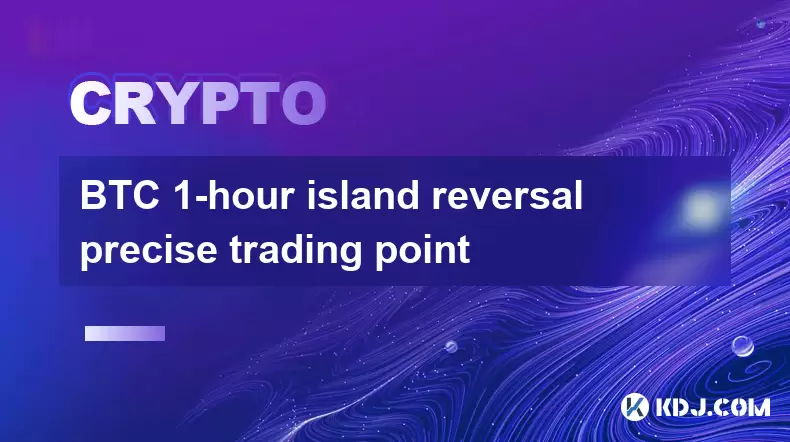-
 Bitcoin
Bitcoin $116700
0.24% -
 Ethereum
Ethereum $3973
4.34% -
 XRP
XRP $3.283
7.68% -
 Tether USDt
Tether USDt $1.000
0.01% -
 BNB
BNB $789.8
2.27% -
 Solana
Solana $176.2
3.31% -
 USDC
USDC $0.9999
0.00% -
 Dogecoin
Dogecoin $0.2238
5.14% -
 TRON
TRON $0.3389
-0.51% -
 Cardano
Cardano $0.7907
4.03% -
 Stellar
Stellar $0.4527
10.02% -
 Hyperliquid
Hyperliquid $41.07
4.27% -
 Sui
Sui $3.794
1.77% -
 Chainlink
Chainlink $19.49
10.40% -
 Bitcoin Cash
Bitcoin Cash $580.9
0.74% -
 Hedera
Hedera $0.2617
4.32% -
 Avalanche
Avalanche $23.41
3.67% -
 Ethena USDe
Ethena USDe $1.001
-0.03% -
 Litecoin
Litecoin $122.4
1.38% -
 Toncoin
Toncoin $3.364
1.49% -
 UNUS SED LEO
UNUS SED LEO $8.988
0.37% -
 Shiba Inu
Shiba Inu $0.00001295
2.82% -
 Uniswap
Uniswap $10.62
5.75% -
 Polkadot
Polkadot $3.922
4.46% -
 Dai
Dai $1.000
0.01% -
 Bitget Token
Bitget Token $4.494
2.15% -
 Monero
Monero $268.0
-1.30% -
 Cronos
Cronos $0.1523
3.68% -
 Pepe
Pepe $0.00001127
4.43% -
 Aave
Aave $285.4
4.85%
BTC 1-hour island reversal precise trading point
The BTC 1-hour island reversal pattern helps traders identify potential reversals by spotting gaps and consolidation on the chart, aiding in precise trade execution.
May 31, 2025 at 08:57 pm

Understanding the BTC 1-hour Island Reversal
The BTC 1-hour island reversal is a technical pattern that traders use to identify potential reversal points in the price of Bitcoin. An island reversal occurs when there is a gap in the price action, followed by a period of consolidation, and then another gap in the opposite direction. This pattern is significant because it often signals a strong shift in market sentiment. On a 1-hour chart, this pattern can provide traders with precise entry and exit points, allowing them to capitalize on short-term price movements.
Identifying the Island Reversal Pattern
To effectively trade using the BTC 1-hour island reversal, it is crucial to accurately identify this pattern. The process involves several key steps:
- Look for the Initial Gap: The first step is to observe a gap in the price action on the 1-hour chart. This gap can occur after a significant news event or a sudden shift in market sentiment.
- Observe the Consolidation Period: After the initial gap, the price should consolidate, forming a small range or "island" of price action. This consolidation period is essential as it indicates that the market is digesting the new price level.
- Watch for the Second Gap: The final step is to monitor for a gap in the opposite direction of the initial gap. This second gap confirms the island reversal pattern and signals a potential reversal in the trend.
Setting Up the Trading Environment
To trade the BTC 1-hour island reversal effectively, traders need to set up their trading environment correctly. This involves using the right charting software and tools to identify the pattern accurately. Here are the steps to set up your trading environment:
- Choose a Reliable Charting Platform: Select a platform that offers detailed 1-hour charts and allows you to customize your view. Popular choices include TradingView, MetaTrader, and Binance's trading interface.
- Add Necessary Indicators: While the island reversal pattern does not require additional indicators, some traders find it helpful to use tools like moving averages or volume indicators to confirm the pattern.
- Set Up Alerts: Configure price alerts to notify you when a gap occurs. This can help you stay on top of potential island reversal patterns without constantly monitoring the charts.
Executing the Trade
Once you have identified a BTC 1-hour island reversal pattern, the next step is to execute the trade. Here’s how to do it:
- Determine the Entry Point: The entry point for a long trade is typically just above the second gap, confirming the reversal. For a short trade, the entry point would be just below the second gap.
- Set the Stop Loss: Place a stop loss order just below the island (for long trades) or above the island (for short trades) to manage risk. This ensures that you exit the trade if the reversal does not play out as expected.
- Calculate the Take Profit Level: Determine your take profit level based on the size of the initial gap. A common strategy is to target a profit equal to the size of the initial gap.
Managing the Trade
After entering the trade, it is important to manage it effectively to maximize profits and minimize losses. Here are some tips for managing a BTC 1-hour island reversal trade:
- Monitor Price Action: Keep an eye on the price action after entering the trade. If the price continues to move in your favor, consider moving your stop loss to break even or to lock in some profit.
- Adjust the Take Profit Level: If the price moves significantly in your favor, you may want to adjust your take profit level to capture more of the move. However, be cautious not to get greedy and miss out on a profitable trade.
- Be Prepared to Exit: Always be prepared to exit the trade if the market conditions change. If the price action suggests that the reversal is not playing out as expected, it is better to exit the trade early and preserve capital.
Analyzing the Trade Outcome
After the trade is closed, it is beneficial to analyze the outcome to improve future trading decisions. Here’s how to conduct a post-trade analysis:
- Review the Entry and Exit Points: Evaluate whether your entry and exit points were optimal. Consider if there were any signs that you missed that could have improved your trade.
- Assess the Risk Management: Analyze how well you managed risk during the trade. Did your stop loss and take profit levels align with your trading plan?
- Learn from the Experience: Use the insights gained from the trade to refine your trading strategy. Whether the trade was profitable or not, there are always lessons to be learned.
Frequently Asked Questions
Q: Can the island reversal pattern be used on other cryptocurrencies?
A: Yes, the island reversal pattern can be applied to other cryptocurrencies. However, the effectiveness of the pattern may vary depending on the liquidity and volatility of the specific cryptocurrency.
Q: How often does the island reversal pattern occur on the 1-hour BTC chart?
A: The frequency of the island reversal pattern on the 1-hour BTC chart can vary. It is more likely to occur during periods of high volatility or after significant market events.
Q: Is it necessary to use additional indicators with the island reversal pattern?
A: While the island reversal pattern can be traded without additional indicators, some traders find it helpful to use tools like moving averages or volume indicators to confirm the pattern and improve their trading decisions.
Q: Can the island reversal pattern be used for long-term trading?
A: The island reversal pattern is typically used for short-term trading due to its focus on 1-hour charts. However, traders can adapt the pattern to longer timeframes by adjusting their analysis to daily or weekly charts.
Disclaimer:info@kdj.com
The information provided is not trading advice. kdj.com does not assume any responsibility for any investments made based on the information provided in this article. Cryptocurrencies are highly volatile and it is highly recommended that you invest with caution after thorough research!
If you believe that the content used on this website infringes your copyright, please contact us immediately (info@kdj.com) and we will delete it promptly.
- Punisher Coin: The Altcoin Ready to Punish Your Portfolio with Gains?
- 2025-08-08 22:50:16
- Mutuum Finance, Bitcoin Whales, and Binance: Decoding the Crypto Currents
- 2025-08-08 22:30:11
- Bitcoin, Crypto Market, Volatility: Riding the Rollercoaster in NYC Style
- 2025-08-08 22:50:16
- HTX Copy Trading Extravaganza: Rewards and Opportunities for Traders
- 2025-08-08 23:30:12
- SPX6900 Pumps & TOKEN6900 Presale: Month Growth Mania!
- 2025-08-08 23:30:12
- Dogwifhat, Beanie, and $800,000: A Meme Worth Millions?
- 2025-08-08 23:35:12
Related knowledge

Can the Bitcoin protocol be changed?
Aug 07,2025 at 01:16pm
Understanding the Bitcoin ProtocolThe Bitcoin protocol is the foundational set of rules that govern how the Bitcoin network operates. It defines every...

How are Bitcoin transactions verified?
Aug 08,2025 at 06:57am
Understanding Bitcoin Transaction VerificationBitcoin transactions are verified through a decentralized network of nodes and miners that ensure the le...

How does decentralization make Bitcoin secure?
Aug 08,2025 at 09:35am
Understanding Decentralization in BitcoinDecentralization is a foundational principle of Bitcoin's architecture and plays a critical role in its secur...

What are some common misconceptions about Bitcoin?
Aug 07,2025 at 07:22pm
Bitcoin is Just Like Regular MoneyA widespread misconception is that Bitcoin functions identically to traditional fiat currencies like the US dollar o...

What is the role of nodes in the Bitcoin network?
Aug 08,2025 at 04:14pm
Understanding the Function of Nodes in the Bitcoin NetworkNodes are fundamental components of the Bitcoin network, serving as the backbone that ensure...

Is Bitcoin a solution for inflation?
Aug 08,2025 at 04:57am
Understanding Inflation and Its Impact on Traditional CurrenciesInflation refers to the sustained increase in the price of goods and services over tim...

Can the Bitcoin protocol be changed?
Aug 07,2025 at 01:16pm
Understanding the Bitcoin ProtocolThe Bitcoin protocol is the foundational set of rules that govern how the Bitcoin network operates. It defines every...

How are Bitcoin transactions verified?
Aug 08,2025 at 06:57am
Understanding Bitcoin Transaction VerificationBitcoin transactions are verified through a decentralized network of nodes and miners that ensure the le...

How does decentralization make Bitcoin secure?
Aug 08,2025 at 09:35am
Understanding Decentralization in BitcoinDecentralization is a foundational principle of Bitcoin's architecture and plays a critical role in its secur...

What are some common misconceptions about Bitcoin?
Aug 07,2025 at 07:22pm
Bitcoin is Just Like Regular MoneyA widespread misconception is that Bitcoin functions identically to traditional fiat currencies like the US dollar o...

What is the role of nodes in the Bitcoin network?
Aug 08,2025 at 04:14pm
Understanding the Function of Nodes in the Bitcoin NetworkNodes are fundamental components of the Bitcoin network, serving as the backbone that ensure...

Is Bitcoin a solution for inflation?
Aug 08,2025 at 04:57am
Understanding Inflation and Its Impact on Traditional CurrenciesInflation refers to the sustained increase in the price of goods and services over tim...
See all articles

























































































